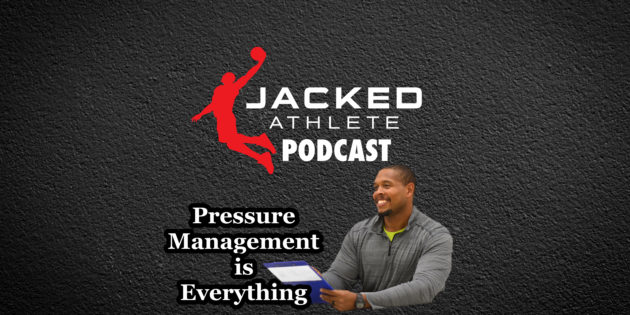https://podcasts.apple.com/us/podcast/jacked-athlete-podcast/id1462537296
“When the muscle expands, we’re creating force. When it compresses, we’re not creating force.”
“Muscle and the contractile elements aren’t the show.”
“Most things in our body are signaled through pressure or lack thereof.”
Grade 1/2 ankle sprain: “Drastic increase in pressure or tension within the non-injured tissue creates the discomfort.”
“Slow moving things, you’re not gonna get too bad of patellar tendon pain because you have a good fluid flow.”
Ingrowth of nerves and blood vessels into injured tendon: “It’s the body responding to the lack of pressure within that area.”
“You stress that area, break down the cross links, allow more fluid in there, now it doesn’t have the space, it doesn’t have to have the other things in there [blood, nerves] to fill that space and it starts to feel better.”
“If you have 1,000 pounds of pressure on that knee and you take off 5% of that, it’s gonna sense that.”
Heavy slow resistance: “As I maintain that constant pressure, I’m adding recruitment of the muscle/tendon, so we’re getting more force distribution over that time frame… which is going to help dissipate the force.”
Jumping: “A rapid firing… stiff, hard, fast contraction but it’s not spread out. It’s focused on one part of the tendon… and now you have this pain… so that rapid rate of force development in a short duration essentially only focuses on a small part of the tendon to be utilized.”
Why pain sets in more with repeated jumps vs. repeated squats: “Because you get this distribution a lot better.”
Band assisted jump:
- you’re going to jump differently
- decreasing load
- decrease the rate of loading. “As you’re landing, it’s actually slowing you down so not only do you have a deceased in load, you have a decrease in rate.”
“These little itty bitty things make big differences in the body especially when you’re elite.”
“Pressure in the tendon, provided appropriately, keeps everything out.”
Tendinopathy: “It’s never gonna go away until you strain it.”
Rest: “It’s just going to set you back. Now you’re just going to spend more time having to do what you should have did from the beginning which is load it.”
“Heavy, slow resistance and isometrics are kind of the same thing as long as it’s heavy and it’s constant tension.”
Resetting between reps: “It takes tension off tendon. We don’t want to do that if we’re trying to drive tendon changes.”
“Iso holding, you can definitely fill in these holes because it’s just a constant pressure going on.”
“The overall idea of stressing the tendon through time, through creep, through stress relaxation… more collagen, creating better channels [for nutrients].”
Why do we get tendinopathy? “Because we’re lazy or we do things we’re not supposed to do.”
“When you push your body to the limits and/or the opposite (you don’t do enough), you start having issues.”
“You’re literally poking holes in your tissue and fluid is coming out of your VL… Now you can’t create the tension in the tissue.”
Patellofemoral pain: “It’s just constant pressure… the key is to decrease the pressure in some way shape or form.”
“Focusing on the foot/ankle and hips versus the knee can help line things up better before you load that knee.”
“Focus on the ankle, focus on the hip, and then focus on the knee. That’s usually a good setup to get that knee in a better position and not have so much pain with patellofemoral issues.”
Sissy squats, knees-forward split squats:
- “You’re trying to produce force while you’re trying to move in the opposite direction. That’s just a ton of pressure.”
- “I think they’re good for tendon health potentially but not for patellofemoral health.”
- “A big, strong, heavy guy, sissy squats, I don’t know if that’s what they need. Maybe a smaller guy, more wiry, I think it’s a little more useful.”
“Discomfort is pressure.”
“Eventually, pressure is either make something break because of too much pressure. Or make something expand and become weak because there’s not enough pressure.”
“Pressure management is the name of the game.”
Tendon warm-up effect: “Viscosity changes… As fluid heats up, it becomes more moveable, less thick.”
Instagram: https://www.instagram.com/thornetrainingandtherapy/?hl=en
Website: https://thornetrainingandtherapy.com
Podcast: https://www.resilientedu.com/podcasts/rehab-to-resiliency-podcast



